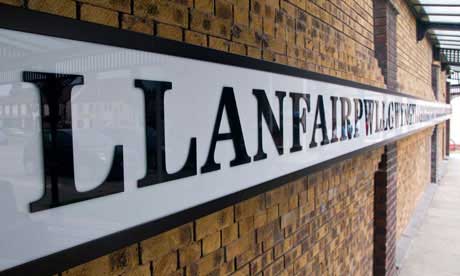Closely related to Cornish, the native language of the English county Cornwall, and to Breton, the native language of Brittany, north western France, Welsh – or Cymraeg to its speakers – dates back to the 6th century, making it one of Europe’s oldest living languages. It evolved from the Celtic language spoken by the ancient Britons and was handed down through the generations until the 19th century, when the industrial revolution brought about an alarming erosion of the Welsh language.
Since then the battle to save Cymraeg has been inextricably linked with Wales’s national identity, and much has been done to promote its usage. At the uppermost level, political parties have been founded (Plaid Cymru began in 1925 with a primary mandate of promoting the language) and acts of parliament have been passed, but the future of the Welsh language has also been embraced by its people. A passion for keeping it alive has led to everything from adopting bilingual road signs to the Welsh television channel S4C.
Today Welsh is not the dead language many would have you believe (and indeed many feared it would become). Welsh is now growing again and, according to a survey by the Welsh Language Board, is spoken by 21% of the Welsh population, 62% of whom speak it on a daily basis.
Although many places in Wales now have English names, the Welsh language still appears in numerous village and town names and, although all the locals speak English, understanding a smattering of Welsh will help visitors understand the heritage of where they are visiting. Undoubtedly the most famous place name is the tongue-twistingLlanfairpwllgwyngyllgogerychwyrndrobwllllantysiliogogogoch, which in English is translated as the fantastically descriptive “St Mary’s church in the hollow of the white hazel near to the rapid whirlpool of Llantysilio of the red cave”.
Even the most basic knowledge of Welsh will inform a visit to this proud and heritage-rich country, so why not make a start with these simple phrases:
Hello Shw mae (“shoo my”)
Goodbye Hwyl (“hooil”)
Welcome Croeso (“croy so”)
Thank you Diolch (“dee-olck”)
Source: Discover Wales: The Living Language
Also, read about the 641 castles in Wales.

Welsh song Dacw Hi from the band Super Furry Animals: